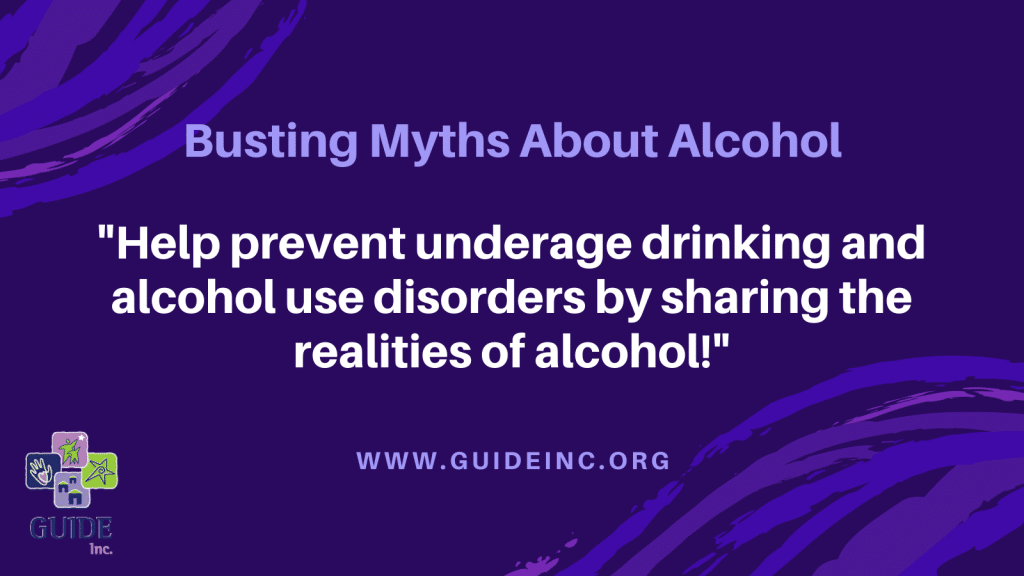Common misperceptions about alcohol use perpetuate social norms that can lead to health consequences for individuals and harmful impacts on communities.
Help prevent underage drinking and alcohol use disorders by sharing the realities of alcohol!

Each of the below myths represents a popular belief about alcohol use in our society. Learn the reality behind each myth and see the resources provided to take a deeper dive into the truth.
Myth: “Having a few drinks will help me relax after a long, stressful day.”
Reality: Though many people may drink in order to reduce feelings of stress, alcohol actually produces an increase in cortisol, also known as a stress hormone. (Verywell) In addition, alcohol is a depressant on your central nervous system, which is why it doesn’t provide the pick-me-up most people expect. Alcohol alters reflexes and speech, the ability to process information, body temperature and breathing. (U.S. News)
Resource: Learn more about how alcohol impacts the brain and body at savebrains.org.
Myth: “It’s safe for my child to drink in my home. Teens who try alcohol under their parents’ watch are less likely to do it outside the home.”
Reality: Supplying alcohol to minors actually increases the risk for continued drinking in the teenage years and leads to subsequent problem drinking later in life. (Partnership to End Addiction) Parents are the #1 influence on a teen’s decision to remain alcohol- and drug-free. Setting boundaries and communicating expectations clearly will make your child less likely to engage in risky behavior.
Resource: Learn more about how parents can help teens make healthy choices in 10 Things Parents Can Do to Prevent Underage Drinking.
Myth: “I don’t have a problem with alcohol. I consume all of my drinks on the weekends and am fine when I return to work on Monday.”
Reality: Binge drinking refers to the consumption of a significant amount of alcohol in a single setting – 4 or more alcoholic drinks by women on the same occasion and 5 or more by men. (American Addiction Centers) Our typical picture of someone with alcohol use disorder is not always accurate. Regardless of when it occurs during the week, there could still be a problem. Doctors diagnose alcohol use disorder when a patient’s drinking causes distress or harm. (NIAAA) If your pattern of drinking results in repeated significant distress and problems functioning, you likely have alcohol use disorder. (Mayo Clinic)
Resource: Learn more about low-risk drinking limits in our Inspired newsletter, Rethinking Drinking.
Myth: “I can drive after drinking as long as I don’t feel drunk. Besides, I can have a coffee or shower to sober up if I need to.”
Reality: Even a small amount of alcohol can impair your judgment, visual functions, coordination and more. 29 people in the U.S. die in car accidents involving an alcohol-impaired driver each day – this is preventable. (CDC) Only time can make you sober again. If you have been drinking alcohol, get a ride home, use a ride share service or call a taxi. Also, never allow another person to drive you who has been drinking.
Resource: Learn more about the risks of driving under the influence in our Inspired Newsletter, Impaired Driving.
If you think you may have a problem with alcohol, please contact the Georgia Crisis and Access Line (1-800-715-4225) for immediate, free and confidential support 24/7 to individuals seeking routine or crisis services.
